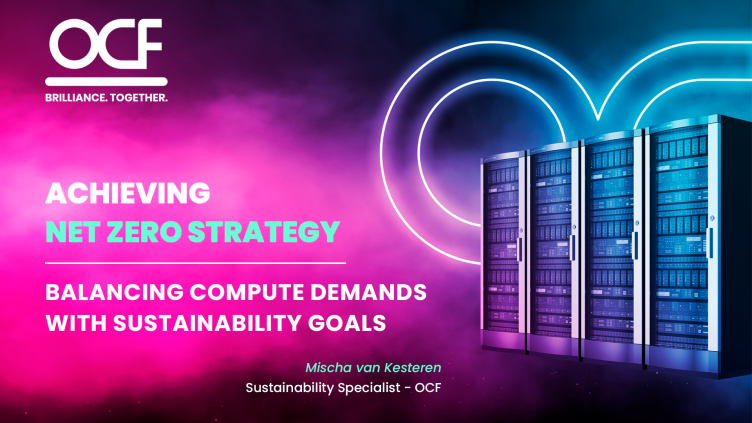Increased Demands of Compute & Net Zero Goals

Net Zero Strategy
The UK government's "Net Zero Strategy” was published in 2022 by the Department for Energy Security & Net Zero and the Department for Business, Energy & Industrial Strategy, aims to achieve net-zero greenhouse gas emissions by 2050. The strategy was recently mentioned in the UK Government's Independent report, released in March 2023, on the future of compute. It outlines a range of policies and initiatives that encompass all sectors of the economy to accomplish this objective, such as decarbonising power generation, reducing energy use in buildings, promoting low-carbon transportation, supporting industry decarbonisation, and preserving nature while leading global efforts to combat climate change. This strategy also acknowledges the importance of public awareness and education on climate change, with measures to encourage and support it.
While the Net Zero Strategy has set out an ambitious and comprehensive plan for the UK to tackle the climate crisis, many businesses in various industries are struggling to achieve these goals, particularly with the significant increase of computes.
The Solutions
To achieve sustainability in developing these systems, the government has recommended a holistic approach through planning, procurement, and innovation. Following this approach, it is essential to make sustainable practices a key requirement in any procurement exercise, focus on local manufacture as much as possible, and use high-efficiency processors and cooling methods. Additionally, finding innovative uses for waste heat and training users to fully utilise any exascale system built are crucial for sustainability.
There is currently a drive to achieve exascale computing in the EU, and after millions of investments the first exascale system was built in the US. Exascale is measured by achieving one exaflop on the High Performance Linpack benchmark. It is voiced that many in the HPC community are starting to see the limitation of this system, especially when it comes to general purpose workloads. Therefore, we need to be mindful of the limitations of using a synthetic metric based on the Linpack benchmark. For several workloads, an accelerator-heavy, Linpack monster system would be wasteful and unsustainable.
The world’s number two supercomputer, Fugaku
Fugaku is a supercomputer developed by Fujitsu and RIKEN, a Japanese research institute. Fugaku is capable of performing more than 442 quadrillion calculations per second, making it nearly 3 times faster than the previous record holder, the IBM Summit. The supercomputer is primarily used for scientific and medical research, and has already been applied to studies related to COVID-19, climate change, and other areas of research that require high-performance computing. Fugaku uses Fujitsu's custom ARM A64FX processors and has a total of 7,630,848 cores, making it one of the most powerful supercomputers ever built. Its advanced capabilities are expected to lead to new breakthroughs in a wide range of fields, from drug discovery to weather forecasting.
We can learn valuable lessons from the Japanese approach, which led to the world's number two supercomputer, Fugaku.
This supercomputer's sustainable system was developed in the same way that the “Independence Report of the Future of Compute” has outlined (planning, procurement, and innovation). The HPC was installed from the ground up with sustainability focussed workloads in mind, such as weather modelling, life sciences and manufacturing. The team designed the system sustainably with sustainability-focused workloads in mind, such as weather modelling, life sciences, and manufacturing. They also prioritised home-grown technology, meaning that the skills existed locally to train users in how to optimise code for the system. With this approach, Fugaku system still holds the top spot in the HPCG ranking (a more general benchmark than Linpack) despite being less than half the speed of Frontier (the current No.1) at Linpack.
